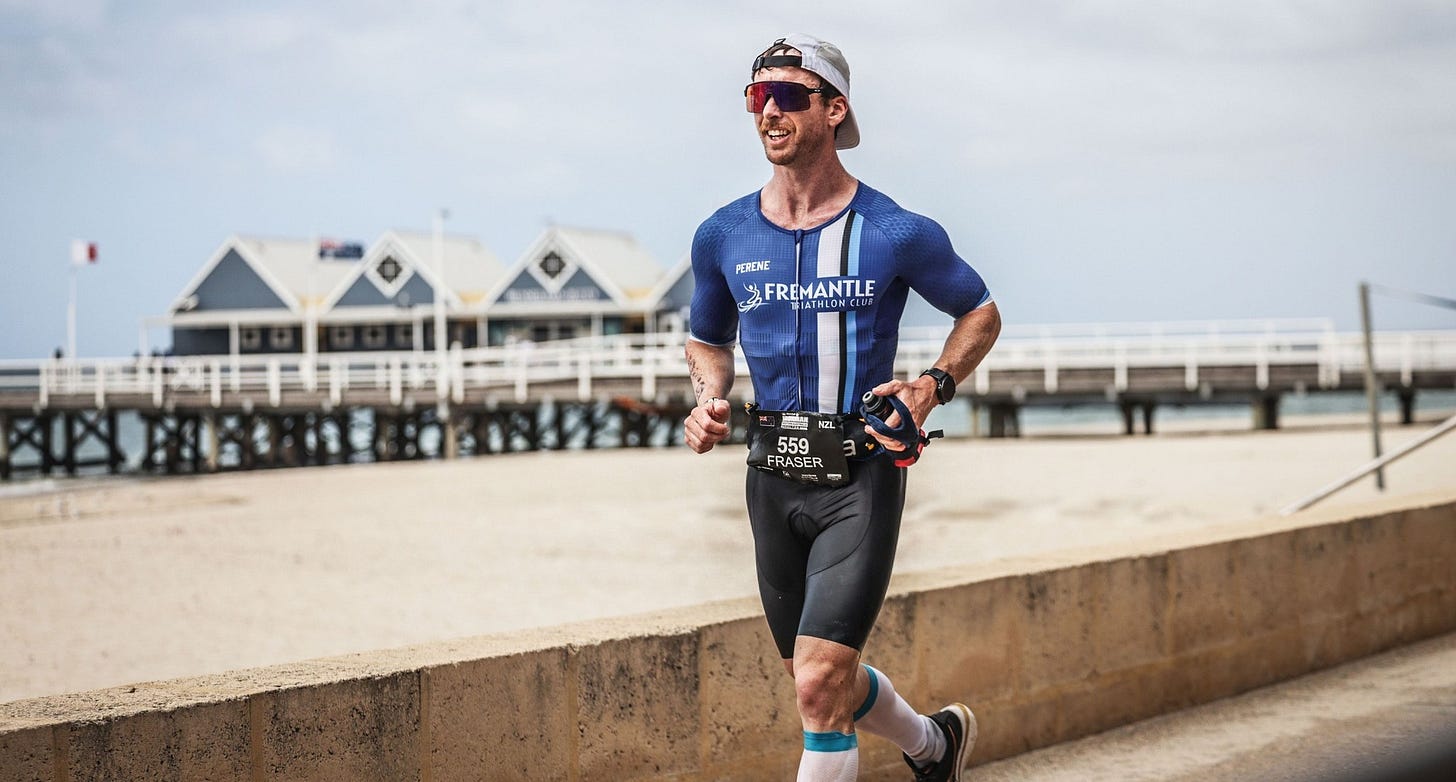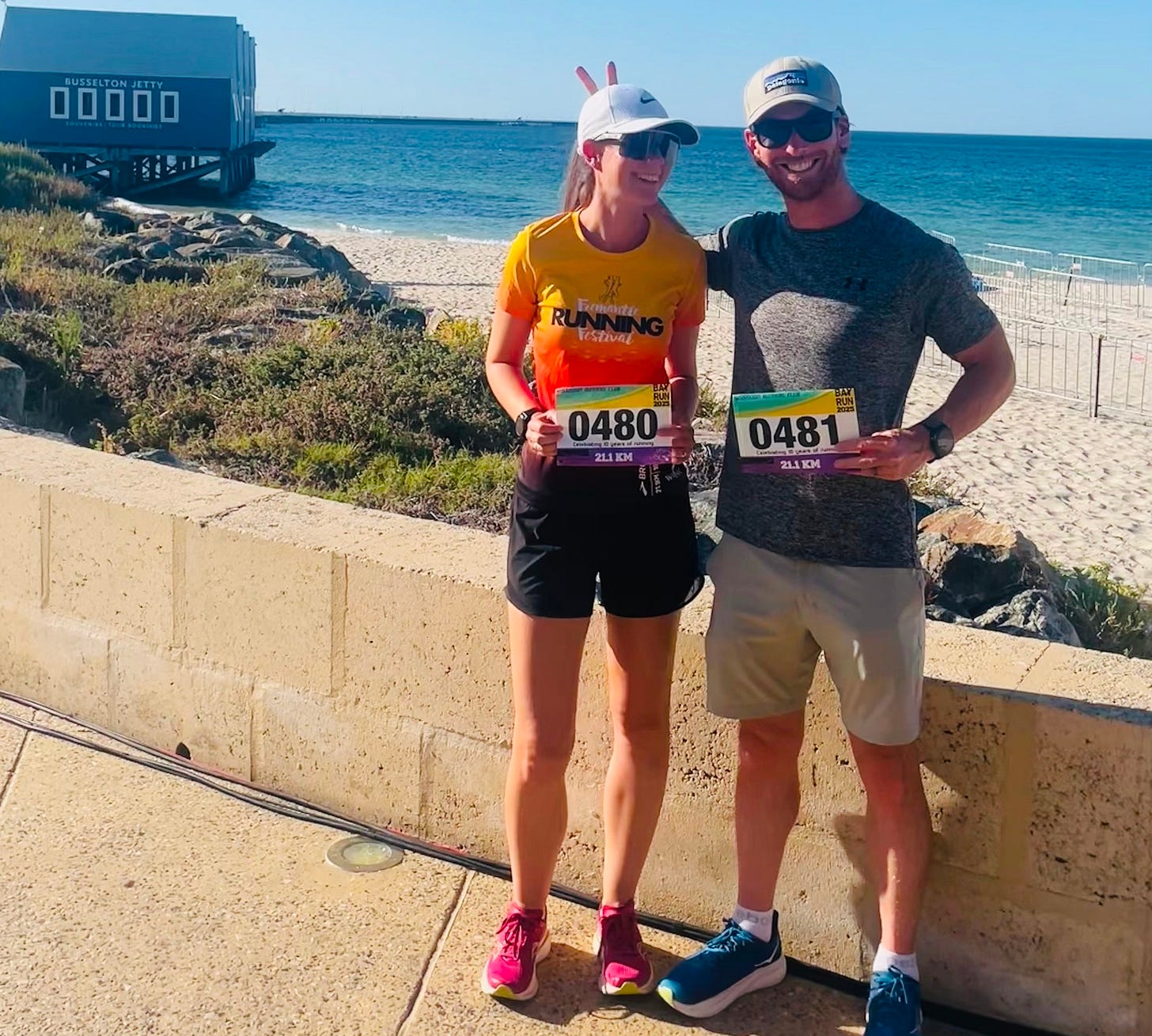As hard as we try to be consistent, the inevitable happens. We get injured or sick. For a runner, there is little more frustrating.
We may be in the middle of a build, ready to push ourselves to the limit to find out what we can truly achieve… and our body blows up.
Draining every last drop out of our training is in vogue: “anything is possible”, “how bad do you want it?”, “stay hard”! We’re assaulted with the message. Pushing your body to its absolute limits is glorified, something to be admired. Hearing about those who go the extra mile and are rewarded for their efforts is intoxicating. We want to be those people, and nothing short of running on broken legs will do.
The temptation is this: if only we could push a little harder, dig a little deeper, run that extra mile, then we’d smash our goals. We’d hit them hard and fast. Better yet - we might surpass them. With these dreams in mind, we pound the pavement.
Romantic as this message is, I don’t have the cast iron body able to handle that kind of training. Not yet. And, unsurprisingly, I ran myself into injury.
When I first felt the niggle, the idea of skipping a single run was unthinkable and visiting the physio at $100 a pop was ludicrous.
Naturally, I ran through the pain.
The irony is that failure to recognise an inflamed tendon has resulted in months without running and a mounting bill at the physio, not to mention dropping out of a race. Ouch. As though to emphasise my plight, I pushed a heavy trolley around the supermarket on Sunday, and I’m still in pain.
I’ve had a lot of time away from exercise to examine how I ended up in this hole.
Naval Ravikant reminds us of the deep truth that “creating anything great requires zero to one.” Like most people, I dread the first step. It’s this tendency towards impatience that so often leads to my injuries. I’m reluctant to tread the path of zero to one. I want to skip ahead - and not a modest jump to steps four or five, but a great leap to nine or ten. A recipe for disaster.
Post-injury, I’ll have to relive steps zero to one. But I have healing to do before I can even stand on the bottom step, setting my sights on the climb. In my relentless pursuit of progress I find myself bouncing back to the bottom step time and again, landing ungraciously on my butt, scratching my head in confusion.
This post is a reminder to myself in the post-injury months to come not to go too hard too fast. To stop seeking the next edge, the discovery that will accelerate my progress to a superhuman rate. I’m guilty of what Thich Nhat Hanh calls “rushing towards the future”, and by doing so I’ve pushed my “future” performance even further away.
My message to myself is this: it’s okay to be where you’re at. Live the process. Love the runs for the joy that they bring. Progress, no matter how small or hard-won, is progress. And it is far better than stopping dead in your tracks. Or, worse… regressing!
The truth is boring: progress is small and steady. It’s rarely linear. It occurs in cycles and bursts. At times it can be identified only by the microscopic lens of Garmin Connect. Progressive overload takes time, and capacity is hard-won; it has to be clawed in, piece by piece, and it’s easily lost.
The hardest thing is to keep doing the right thing in small doses: hitting macros, prioritising sleep, progressively overloading workouts. Especially when you suspect the secret is in “the big dose”.
I’ve learnt the hard way that it isn’t. If living with an Ironman has taught me anything, it’s that progress is gradual.
In the end it wasn’t impatience that got me, it was fear. I was afraid to be stuck in “the same place” with my strength and fitness by 2026 (an arbitrary date I inflicted on myself). It felt as though my progress was too small to matter, like I was swimming in circles. But it was all a mirage. I see now that I was moving forwards, on a slow but steady build. I was nailing it.
Injury has been a huge lesson in gratitude. Time away from running has made me realise that if I can’t be content with my running in the present moment then I won’t be content when I complete my first marathon or ultramarathon, or when I smash out my next Park Run PB! I might experience a temporary high with those achievements, but I’ll soon be back to running discontent.
Oliver Burkeman reminds us we are finite beings. When we choose to allocate our precious time to one particular pursuit, we shut off all other possibilities for that time. And that’s okay. We don’t need to run ourselves into injury. We only have so many spare hours within a working week. It’s impossible to run and strength train at the exact same time, to be both inside the gym and out on the trails. But we can pursue multiple things in a healthy, sustainable way. If that’s what we choose.
Before my injury a friend told me how well my trail running was coming along. I brushed it off, attributing the pace to external conditions, my nutrition, the stage in my cycle. In short, I praised everything but myself. She did the best thing she could’ve done, calling me out and telling me not to be so hard on myself: “You put it down to everything else when, really, you’ve been putting in the work, and it’s paying off.” (Thanks, Amelia 😉)
My progress was visible to everyone but myself. This is a message I’d do well to remember when I’m back out on the trails, and something easiest seen in hindsight.
Right now I’m grateful to be running for ten minutes on the treadmill. I have a newfound appreciation for the mobility of my body. It’s hard to believe it used to carry me over rugged, rocky terrain without complaint. I’m not likely to chastise it for speed or endurance for a while to come. But I’m sure I’ll forget, over time. And I’ll have to come back to this message.
When I do, I’d like to remember this: all runners can do is put one foot in front of the other, absorb the joy that is unique to running and inch towards our goals. But we don’t need to inch towards contentment. Because if we’re running at all, we’re already there.



